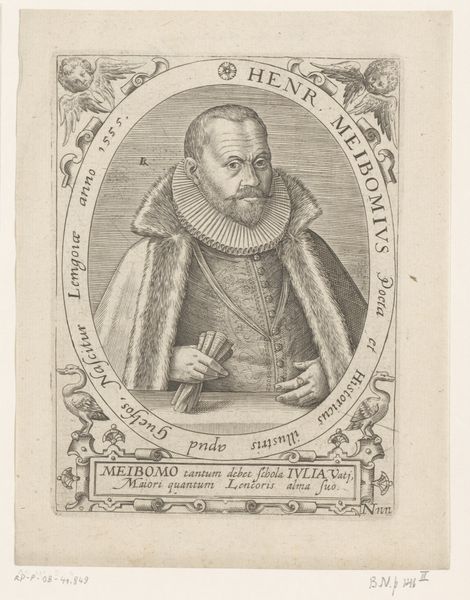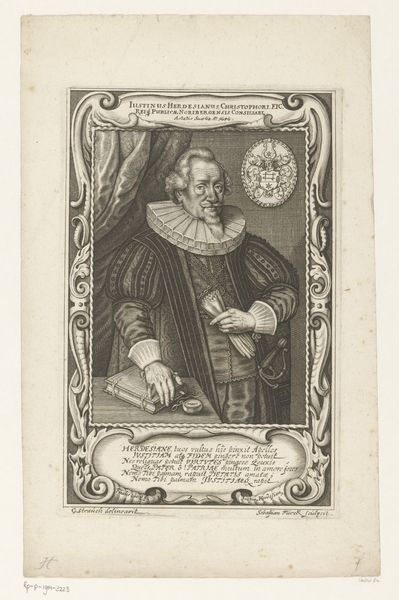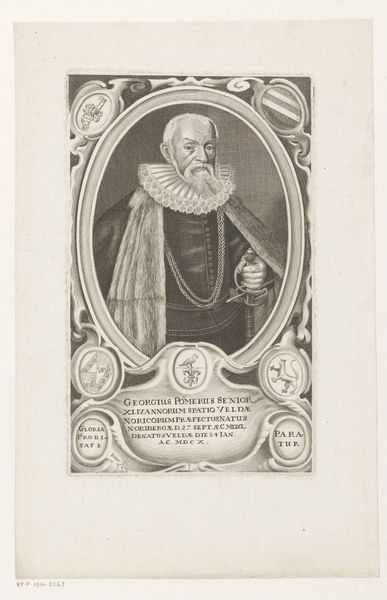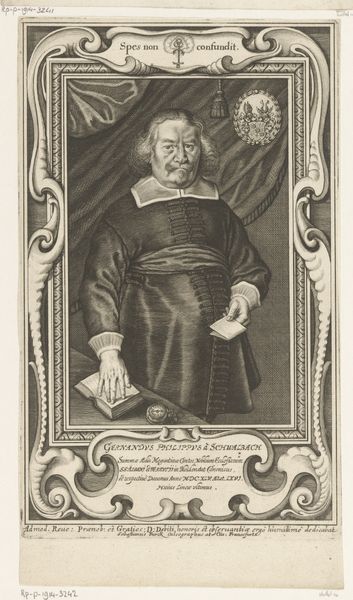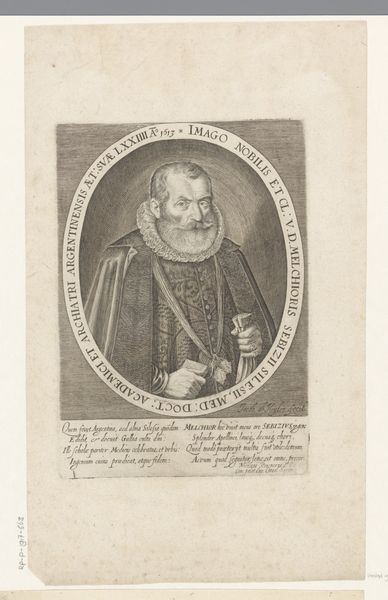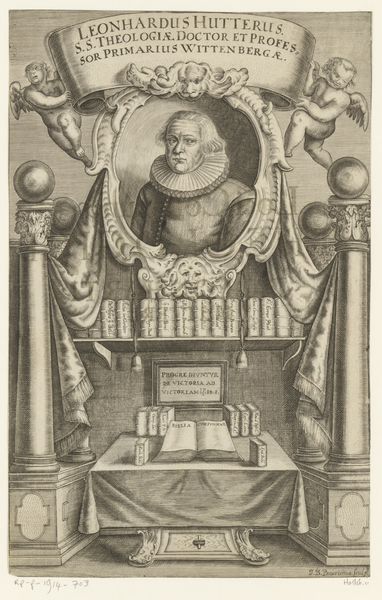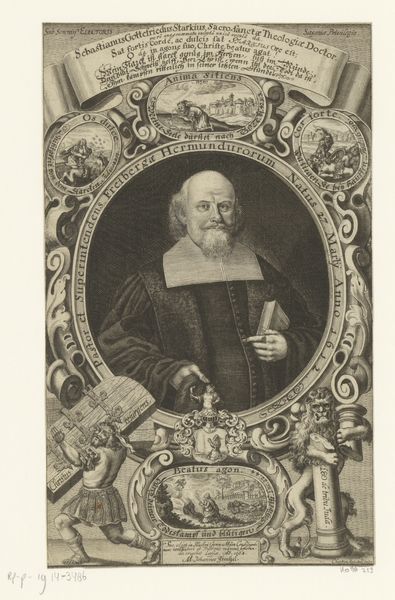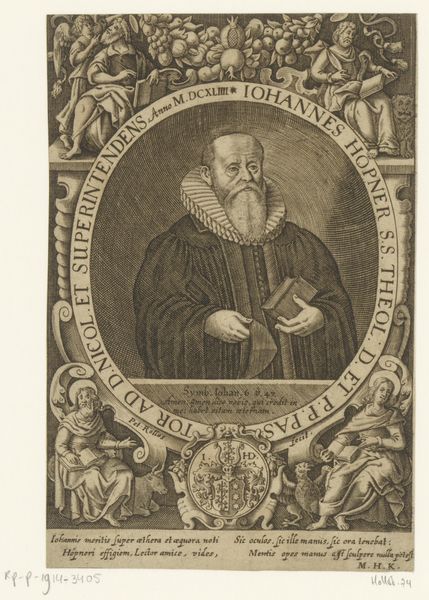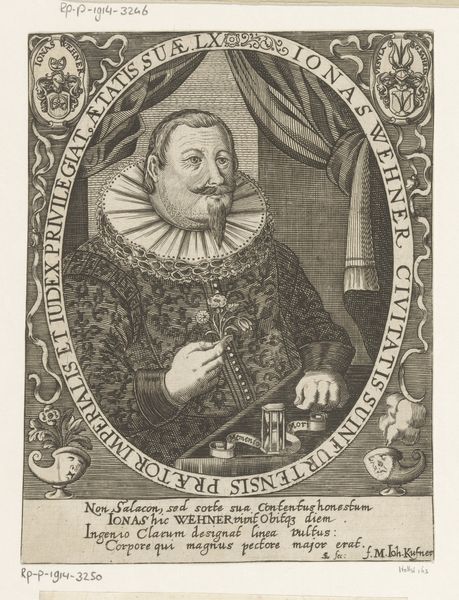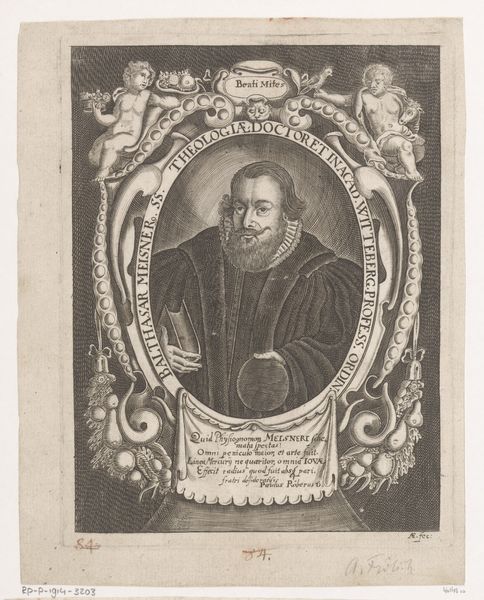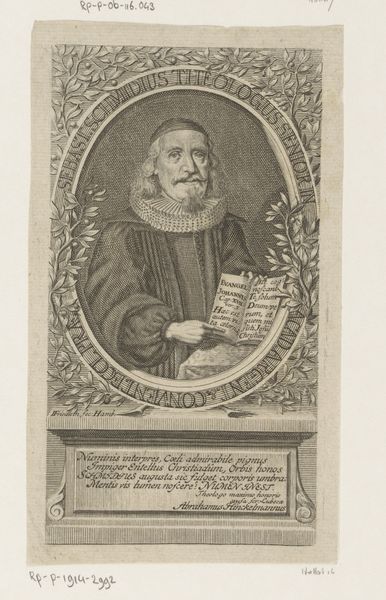
print, etching, engraving
#
portrait
# print
#
etching
#
caricature
#
mannerism
#
northern-renaissance
#
engraving
Dimensions: height 198 mm, width 138 mm
Copyright: Rijks Museum: Open Domain
Curator: This is a portrait of Salomon Schweigger, an engraving crafted in 1605, now residing in the Rijksmuseum collection. Editor: My first impression is that of contained drama, there's so much contained symbolism trying to break free from that oval frame! The high ruff almost imprisons the figure’s head. Curator: Indeed. Let's begin by observing the careful articulation of line and form. The artist, Heinrich Ulrich, uses hatching and cross-hatching with great precision to define the contours of Schweigger’s face and attire. Consider, particularly, how the fall of light accentuates the planes of his visage. Editor: But the real story for me lies in the printmaking process. Consider the labor involved in etching and engraving those intricate lines on the metal plate. Each mark required a deliberate physical act and that is how meaning is brought out, rather than inherent properties of the figures, as some believe. What does that labor impart on the final product, do you think? Curator: Certainly, the labour is significant, though perhaps less illuminating. Consider instead the symbology: the hourglass reminds us of the transience of life, or the scroll with Greek inscription that alludes to knowledge and scripture and adds layers to our understanding. We see not only Schweigger the man but also an evocation of early 17th-century values. Editor: And those values were being rapidly shaped by the technologies of dissemination—like printmaking! These engravings, reproducible en masse, carried cultural capital but also physically circulated new ideas through merchant and trade networks that are physically being pushed by the labor behind their making. Curator: A pertinent point, and yet, perhaps these material realities fade somewhat against the overall composition—the strategic balance of light and dark, the symmetrical placement of figures framing Schweigger's portrait, and even the contrasting textures—all speak to a highly refined sense of aesthetics. Editor: Perhaps... I find myself always drawn back to how these objects came into being, and who had access to them and why, as material objects made by human hands circulating among other hands, but that is the nature of where I find art meaning to lay. Curator: An enriching counterpoint that makes this piece ever the more intriguing to unpack and think about the context through new lens. Editor: Precisely! And with that, perhaps it’s time for our listeners to move onward in the exhibition, now carrying that context with them, as they consider where else they might be finding that the same rings to be true for other artwork.
Comments
No comments
Be the first to comment and join the conversation on the ultimate creative platform.
